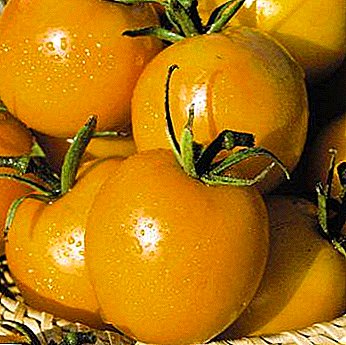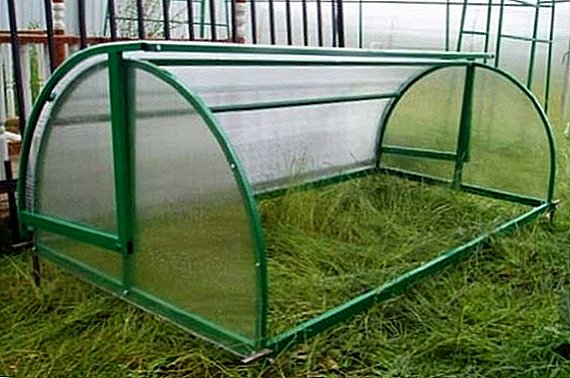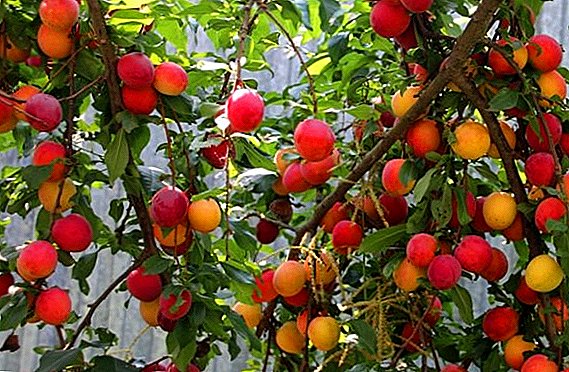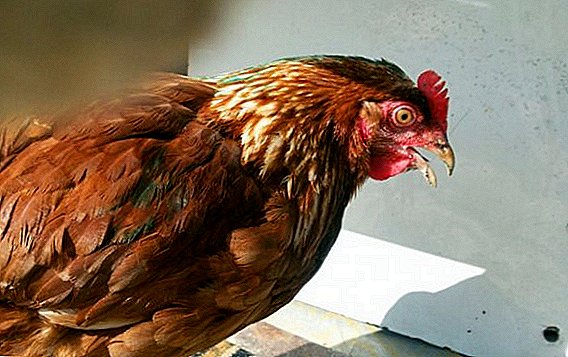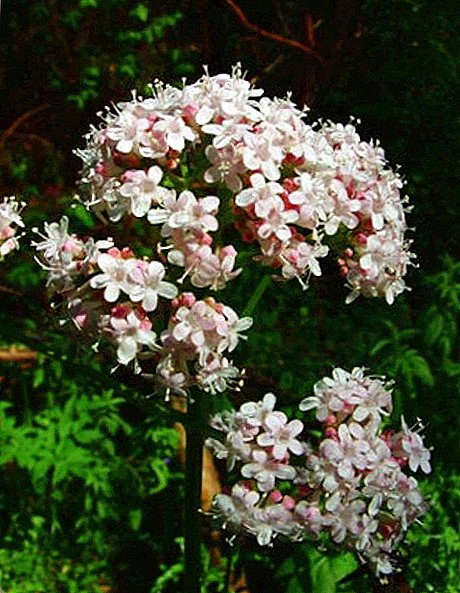 Due to the balanced composition of valerian, it is widely popular among folk healers as a universal therapeutic agent. In any country of the world, the rhizome of this plant is included in the base of medicinal raw materials. This article offers you the recipes for the practical use of decoctions and tinctures based on rhizome of Valerian.
Due to the balanced composition of valerian, it is widely popular among folk healers as a universal therapeutic agent. In any country of the world, the rhizome of this plant is included in the base of medicinal raw materials. This article offers you the recipes for the practical use of decoctions and tinctures based on rhizome of Valerian.
Description
Valerian (or Valerian) is a genus of perennial grasses of the family Honeysuckle, consisting of more than 200 varieties. In Latin, the name of the grass means "to be healthy."
The honeysuckle family includes plants such as weigela, abelia, and of course honeysuckle.
The first handwritten mention of the term, which has come down to our times, dates back to the XIII century (found in the book of the Italian botanist Matteo Silviko). There are also versions that the grass was named after the Roman emperor Valerian or the Roman physician Pliny Valerian.
Botanical description. The stem is erect, tubular, covered with grooves, branched at the apex. In height, the grass can reach 2 meters. Sizes of rhizomes: 2-4 cm in length and 2 cm in diameter.  The root system has multiple cord-shaped roots. A peculiar scent is peculiar to the whole underground part. Sheet plates opposite, different in shape and index of dissection. Upper foliage sessile, lower leaves petiolate.
The root system has multiple cord-shaped roots. A peculiar scent is peculiar to the whole underground part. Sheet plates opposite, different in shape and index of dissection. Upper foliage sessile, lower leaves petiolate.
The flowers are odorous, small, picked up in paniculate or filamentous filaments. The color of flowers varies from white to dark pink. The fruits of the plant are light or dark brown elongated seeds with "hairs".
Spread. Valerian lives almost throughout the European continent, in Central and North Asia, and in North and South America. In the wild, perennial grows on the slopes of the mountains, on the forest edges, along the banks of rivers, on swampy areas.
Biological features. Grass blooms from May to August, fruits form in July-September. The plant adapts to the most diverse soils and different temperature conditions. It grows well in areas with high humidity of the earth.
Propagated by seeds. Crops are located in elevated areas.
Harvest valerian roots dug in the second year after sowing. The roots are cleaned of residual soil, thoroughly washed with water.
The raw materials are kept under a canopy, then dried in professional dryers at a temperature of 35-38 ° C. Billets are stored no more than 1 year in dry and well-ventilated rooms.  Dried valerian root
Dried valerian root
Composition
According to its chemical composition, valerian has no analogues among other medicinal herbs - this is a real storehouse of useful substances. Its roots include about hundreds of unique substances of various actions.
So, in the rhizome with roots found from 0.5 to 2.4% of essential oil.
In the rhizomes are also present borneol and valerian esters, alcohols, sugars, glycosides, a set of macro - and microelements: selenium, iron, potassium, calcium, magnesium, zinc, copper and manganese, tin and chromium, nickel and vanadium.
Valerian is in the top 10 of the most useful medicinal plants.
In addition to inorganic compounds, a number of components of organic origin were found in the composition of the roots. In particular, the raw materials contain the following valuable substances:
- iridoids, valepotriates (0.8-2.5%);
- tannins;
- triterpene saponins;
- acids (butyric, malic, acetic and formic);
- alkaloids;
- alcohols and their derivatives;
- free amines.
 Calories valerian - 0.1 calories per 100 grams of raw materials. Energy value: proteins, fats, carbohydrates - 0 g.
Calories valerian - 0.1 calories per 100 grams of raw materials. Energy value: proteins, fats, carbohydrates - 0 g.Beneficial features
Due to the unique composition of valerian, one can talk about the versatility of its sphere of influence on the human body.
The main advantages of this herb are antispasmodic and sedative properties.
The essential oil of the plant has an anti-epileptic effect - reduces the convulsive spasms of smooth muscles. The healing qualities of the root regulate the activity of the cardiovascular sphere.
Did you know? Valeryana was part of one of the best healing means of antiquity - teriak. This miracle remedy was considered an antidote. from toxins of any origin. Besides, teriak was universal elixir from all internal ills. The collection was created by the Pontic king Mithridates, who was afraid to become a victim of poisoning.
Pharmacology classifies valerian preparations as a tranquilizer class. Scientists note the ability of the herb to reduce reflex excitability and prolong the effect of sleeping pills.
The pharmacological action of the plant also consists in improving the blood circulation processes, regulating the functions of the digestive organs (increasing the acidity of gastric secretion, accelerating the excretion of bile).
Video: what are the beneficial properties of valerian drug
Medicinal recipes
For medical purposes, use the rhizome and roots of Valerian. Dry or fresh roots can be taken in the form of infusion, tincture, decoction, powder, etc.
Decoction of roots
To prepare a decoction of valerian root, 10 grams (1-2 tsp.) Ground raw materials, pour 200-300 ml of water. Put on the fire and bring to a boil. Then the liquid must be boiled for 2-3 minutes, and then strain and cool.
Medicinal decoction is recommended for:
- spastic states of the gastrointestinal sphere;
- painful menstruation;
- climacteric disorders.
Eliminate the painful sensation during menstruation by using nut grass, dodder, cottage ordinary, viburnum, or eating pomegranate.
Assign a means of 1-2 tbsp. l after meals 2-3 times a day. Possible dilution of broth in a glass of water.
Water infusion of roots
For the preparation of water infusion, combine 1 teaspoon of crushed roots with a glass of boiling water. Cover or wrap a towel and hold for about 2 hours. Then strain the liquid.  Infusion is shown when:
Infusion is shown when:
- severe headaches, as an adjuvant for the treatment of migraine;
- vegetative neurosis, anxiety;
- sleep disorders;
- accelerated heart rate;
- muscle cramps.
Take the drug inside of 1 tbsp. l up to four times a day. As for the connection with food intake, the infusion is recommended half an hour after a meal or shortly before a meal.
Did you know? Legend has it that Queen Cleopatra herself used valerian as an aphrodisiac. For this, the slaves covered the floor around their mistress’s bed. the top of this grass.
Alcohol infusion of roots
To prepare the tincture on alcohol, take pure medical alcohol (70%) and ground Valerian roots (dry or fresh) in a ratio of 1 to 5.
Combine products in a glass jar, mix well. Insist in a dark place for 10-12 days. At the end of the process do not forget to strain the mass.
Alcohol tincture taken with:
- increased emotional excitability;
- severe irritability;
- nervous shock;
- sleep disorders;
- spasms of the stomach and intestines;
- climate disorders.
 Assign a remedy 3 times a day for 15-30 drops. It is recommended to use it shortly before meals. Drops can be diluted in a little water.
Assign a remedy 3 times a day for 15-30 drops. It is recommended to use it shortly before meals. Drops can be diluted in a little water.Important! Remember that this tincture is toxic. Therefore,consuming in excess of 30 drops in 1 administration, you harm your liver and digestive tract.
Bath decoction
To prepare a decoction for baths, 1-3 cf. l crushed grass root and 2-2.5 liters of water. Mix the root with water, bring to a boil, then boil over low heat for about one minute.
Ready broth must be insisted for an hour. Add filtered solution to a bath filled with warm water.  Valerian baths are shown:
Valerian baths are shown:
- in the initial phase of hypertension;
- with problems with the central nervous system (nervous irritability, anxiety states);
- for insomnia.
Also beneficial to the nervous system affect the bath of flowers of chestnut, pine needles, marigolds and linden.
This bath should be taken for 10-15 minutes, preferably - before bedtime.
Powder
The powder of Valerian roots is prepared quite simply: the dry roots of the plant must be passed through a coffee grinder.
The drug is prescribed as a sedative and healing agent in the presence of the following ailments:
- severe headaches;
- scarlet fever;
- vasospasm;
- pneumonia.
It is recommended to take a powdery means 30 minutes after eating, about 1 or 2 grams 3-4 times a day.
Side effects
In addition to the benefits rhizome Valerian can cause some harm to the body. The inhibitory effect of the root can cause difficulty sleeping, weakness, depression, a decline in working ability.  Failure to comply with the norms of consumption of valerian preparations can cause deterioration of the functions of the stomach and intestines (may occur), cause dizziness and migraines, nausea, malfunction of the heart muscle.
Failure to comply with the norms of consumption of valerian preparations can cause deterioration of the functions of the stomach and intestines (may occur), cause dizziness and migraines, nausea, malfunction of the heart muscle.
Important! To avoid any undesirable effects, you must contact for tovalidated advice from your caregiver the doctor.
The effect on man of drugs on the basis of Valerian individually. Especially high susceptibility is observed in people who rarely take painkillers and sedatives. In some cases, prolonged use of decoctions and tinctures can lead to allergies.
Sometimes an allergic reaction occurs after the first dose. Hypersensitivity to valerian components is also found.
Contraindications
There are not so many caveats to treatment with various valerian agents. First of all, they are absolutely contraindicated for persons suffering from enterocolitis. Valerian is not recommended for drowsiness and liver disease.  It is also important to keep in mind that the plant promotes blood coagulation, so it should be used very carefully by people with high levels of prothrombin. Acceptance of such funds should be limited to hypertensive patients, since the reverse reaction is not excluded: excitement against the background of increased pressure.
It is also important to keep in mind that the plant promotes blood coagulation, so it should be used very carefully by people with high levels of prothrombin. Acceptance of such funds should be limited to hypertensive patients, since the reverse reaction is not excluded: excitement against the background of increased pressure.
Important! The maximum allowable treatment period tinctures, decoctions and other means of valerian is 1.5-2 months.
In some patients there is an individual sensitivity to valerian - in this case, the medicinal plant is not appointed.
Valerian is strictly not recommended for children, as well as for pregnant women in the first three months of carrying a child. In addition, care should be taken when the dosage is required by nursing mothers.  Be careful after taking the medicine with valerian is necessary when driving a car, as well as at work that requires concentration and high reaction rate.
Be careful after taking the medicine with valerian is necessary when driving a car, as well as at work that requires concentration and high reaction rate.
It can be summed up that valerian is the most valuable medicinal plant, combining a mass of organic substances and trace elements.
Learn how in the recipes of traditional medicine are used: Baikal skullcap, chistyak, five-leafed gynostemma, mountaineer multiflorum, brahmi, immortelle sandy, celandine, jaundice herb, common tansy and boletus.
Traditional recipes based on this herb are widely popular, mainly because of their low cost and relative harmlessness of use. However, it is important to comply with the dosage and do not forget about the available contraindications.


